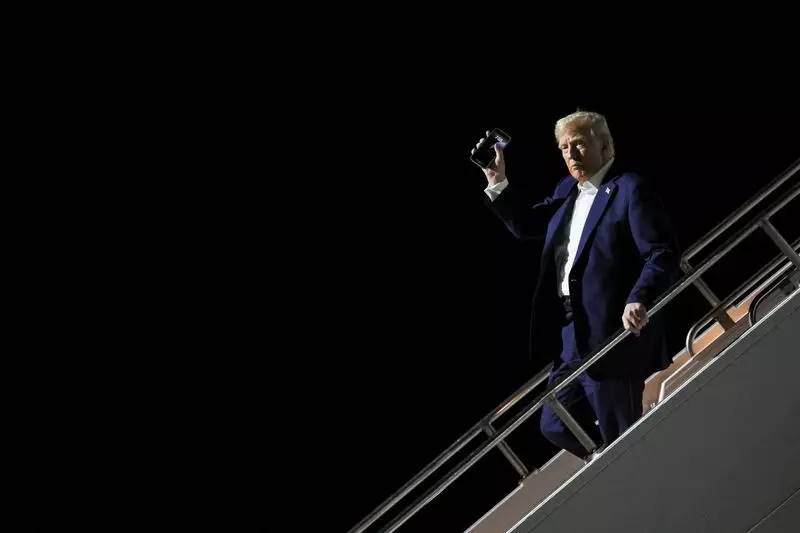After an intense and tumultuous week filled with significant announcements and policy reversals, President Donald Trump made a noteworthy appearance in Las Vegas, a symbolic yet strategic choice for his first major speech upon returning to the presidency. Since resuming office, Trump has implemented an aggressive agenda to dismantle many policies established by his predecessor, Joe Biden, while simultaneously re-establishing his pro-business credentials by targeting tax reforms beneficial to specific sectors. Las Vegas, renowned for its hospitality and gaming industries, represents a critical battleground in both the economy and politics, making it the ideal backdrop for Trump’s messages surrounding economic relief.
Central to Trump’s Las Vegas address was his commitment to eliminating taxes on tips, a move ostensibly designed to resonate with the local workforce heavily reliant on gratuities. This initiative reflects a broader strategy to appeal directly to service workers and their families, who may face financial stress amid rising costs of living. The president’s promise to abolish taxes on tips echoes sentiments he first expressed during his 2024 campaign, showcasing his intent to foster goodwill within such a critical demographic. Observers note that approximately 20% of Nevada’s economy is anchored by the service sector, emphasizing the significance of this commitment in the broader context of economic recovery.
Hailing his earlier vow, Trump remarked, “Can you remember that little statement about tips?” Such rhetorical techniques aim to not only remind voters of his previous commitments but also to reinforce the narrative that he prioritizes the financial welfare of everyday Americans. The Nevada Republican Party chairman echoed these sentiments, suggesting that Trump’s focus on tax cuts aligns with the pressing financial realities faced by residents of the state, including the soaring prices of essential goods.
While Trump’s promises have attracted initial enthusiasm, they are not without controversy and concern. His ambitious tax cut proposals, which threaten to expand the national debt by an estimated $7.5 trillion over the next decade, have raised eyebrows among fiscal conservatives and budgetary hawks within Congress. These individuals express concerns over the sustainability of such a program, especially considering the existing $36 trillion in national debt.
The backdrop of an increasing bond market anxiety poses further complications for Trump’s tax agendas. Discontent among GOP members regarding the financial implications of extensive tax cuts suggests that while the public rhetoric may point towards massive financial relief for voters, the political machinery may lag behind, grappling with fiscal realities that demand a more cautious approach.
In a notable shift from traditional economic strategies, Trump is proposing to leverage revenue generated from higher tariffs on imported goods to finance his ambitious tax cuts. This proposal marks a significant departure from existing fiscal frameworks as it relies on uncertain tariff revenues that might not deliver the anticipated financial stability required to uphold his tax goals.
This unconventional approach has also met with skepticism from allies within his party, who caution that relying on fluctuating trade tariffs may lead to unpredictable financial outcomes. This element introduces a layer of complexity to Trump’s tax plans, highlighting the challenges of implementing transformative economic policies while maintaining fiscal responsibility.
As Trump solidifies his presence in the political landscape with a palpable focus on tax cuts and economic revival, the implications extend far beyond his immediate strategy in Las Vegas. The overarching vision he delineates continues nurturing a base eager for economic relief, but it also casts a shadow of uncertainty over responsible governance.
His return to office presents not just a revival of his policies but a critical test of his leadership within a shifting Republican landscape. As he rallies support for an aggressive approach to taxation and economic reform, the interplay of public support, congressional dynamics, and broader economic realities will determine whether his ambitious promises can be translated into substantive policy changes. The coming months will be pivotal as Trump navigates these complexities on his path toward the 2024 elections.

